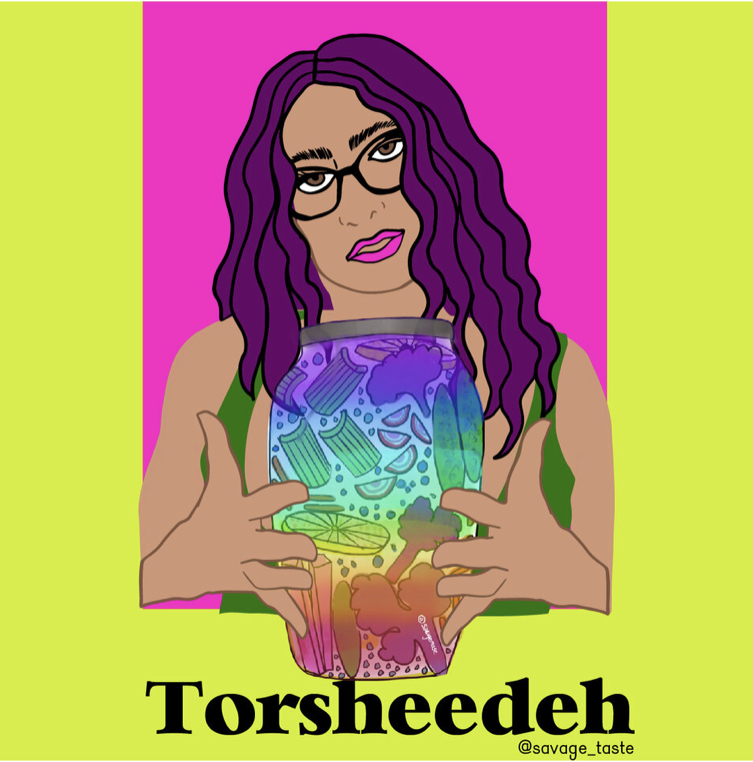I grew up in Arizona, after my family immigrated there from Iran when I was four. There wasn’t much of an Iranian community in AZ when I was growing up, which meant there weren’t really any markets or restaurants that catered to the very distinct Persian palette.
Around the time I was in high school in the late 80’s, there was a sudden influx of Iranians- some coming directly from the homeland; others moving to Arizona from California, seeking affordable housing and better quality of life for their kids.
As the Iranian community grew, so did the need for cultural resources. Slowly but surely, the Persian markets and restaurants started sprouting as well as the “discos” and the lavish dinner parties where families had a chance to mix and mingle and check out the options for potential mates for their kids of marriageable age.
Clueless as I was at 17, I was also apparently being scoped out by Iranian families as a potential candidate for matrimonial match-making.
By the time I was 19, it was clear to me that I was not destined for the traditional route of a semi-arranged marriage to a nice 30-something engineer who came from a “good family” and who would support me while I got my college degree in pharmaceuticals or dentistry (to have in my back pocket for later, after the kids grow up and I could go back to work.)
I hadn’t yet fallen in love with my first boy (a Sephardic Jew from Mexico City who was in my marketing class) or my first girl (an Iranian-British classmate in my accounting seminar).
I knew something was “different” about me, but had yet to discover what exactly it was. All I knew was that I noticed that I often made the elder Iranian men in my community very uncomfortable when I was around them, whether it was at a family dinner party or at a public community gathering.
One day when I was 19, my mom asked me to pick up some Persian ingredients for her from one of the local markets. That is the day I learned the significance of “pickled” in the culture I grew up in. The shop owner was a traditional Iranian man who knew our family. As is customary, he asked how my family was doing and if I was engaged yet. I was used to being asked this question by my Iranian elders at every gathering I went to, and the silently judgmental look I would receive when I would say with relish “No thank God I am not engaged to anyone!”
This time, however, I did not receive a silent stare when I gleefully replied that I was not engaged. Instead, the well meaning man told me I better hurry up and find myself a husband before I became “Torsheedeh”. The word “Torsheedeh”, I found out, comes from the word “Torsh”, which in Farsi means “Sour”, or “Torshi”, which means “Pickled”.
I learned that day that single women who were considered past their prime were thus referred to as “Torsheedeh” amongst the community and could be viewed with both pity and distaste. Once a woman was given that title, she was no longer desirable or someone to considered as potential wife material.
Perhaps, I should have been offended or angry that at 19 I was already on my way to being “Torsheedeh” in the eyes of some members of the Iranian community. But instead, when this shop owner insinuated I was soon to be sour milk and/or pickled garlic, I felt a bit giddy inside. To me, the idea of being a “Torsheedeh” woman felt radical and liberating.
Fast-forward a few decades, a few major social/cultural/technological movements later and here we are in 2020. It is PRIDE month and “PRIDE” exists today because of riots & protests held by fierce and fearless American Black and other POC trans/queer folx who risked everything to stand up for the rights of the LGBTQ communities.
Today we are in the midst of a country-wide and world-wide series of mass protests centered around Black Lives Matter, racial justice and the defunding of the barbaric and archaic police organizations in the US.
We are still in the thick of the pandemic and it is unclear what the best protocol is to stay safe and stop the spread of the virus while also cautiously re-opening businesses and public spaces.
As shit continues to hit the fan, I find myself making more and more jars of pickles and reflecting. Spending time meditatively cutting an array of colorful ingredients, playfully arranging them in random glass jars, experimenting with different spices and vinegars to see what color and flavor the brine will become—these have become comforting activities for me during a time of great uncertainty as well as a time of collective growth in consciousness as a nation.
As part of my self-reflection during this pickle making, I started to see a poetic connection between the complex layers of being a person of the QTBIPOC experience and the act of pickling. I thought of how diverse and varied the shapes, colors, textures, and flavors are of pickled foods.
Credit: Parisa Parnian
IG: Food @savage_taste
Design: @savagemuse
Website: www.savagemuse.com
